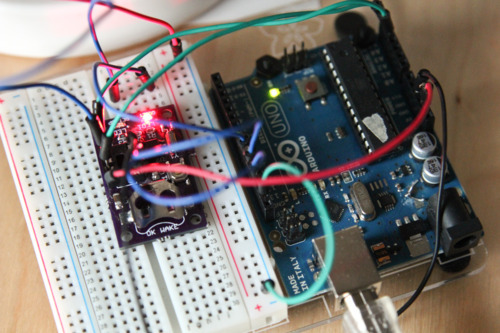OK Wake as its own breakout board

I am not usually this smart. I was fretting about how to get accessible pinouts to the tiny SOIC-8 PCF8523 while developing the OK Wake firmware on an Arduino. I thought about dead-bug wires, or picking up an SOIC breakout board from a local store, or doing something ugly with perfboard. I briefly explored repurposing an old unpopulated PCB, like maybe the third Hypna Go Go PCB from Laen, which uses an SOIC-8 for its ATtiny13a.
Then I realized that the OK Wake itself was the perfect board! Just connect the ATtiny socket’s pins to the corresponding pins on the big brother Arduino. That’s what I did, and it’s working very nicely. And as a bonus, I didn’t have to sacrifice any PCBs or extra PCF8523s.
Kind of obvious in retrospect. But in mental cycles expended, I definitely earned it.
[Update from a couple hours later] I’ve successfully done the following:
- Using the Arduino’s Wire I2C library, read the seconds from the ‘8523 and confirmed that they increment properly.
- Turned off the CLKOUT default settings, which were messing up /INT.
- Set SIE, which enables the once-a-second interrupt on /INT.
- Configured TAM to pulse the /INT interrupt so I don’t have to clear it.
- Confirmed with my logic analyzer that the pulse is indeed 1⁄64 seconds long.
- Got the Arduino firing an interrupt routine when /INT goes active.
- Confirmed that the button and the ‘8532 /INT signal don’t interfere with each other.
In other words, unless the ATtiny is weirdly different from the ‘328, then the circuit is in perfect working order.